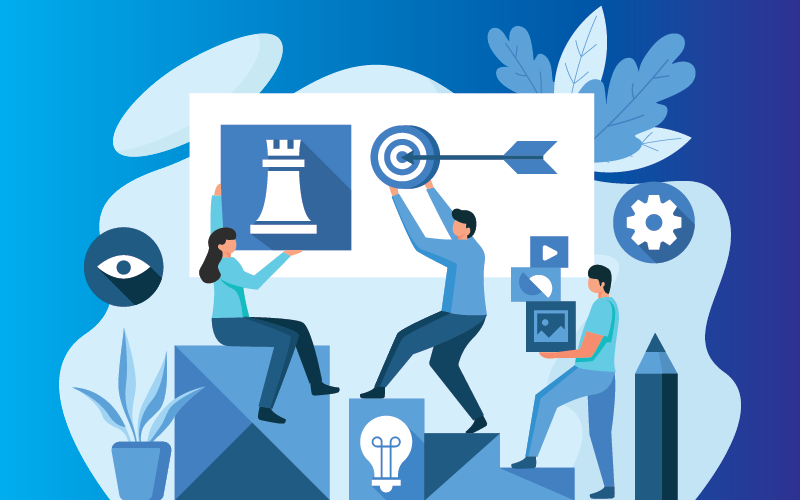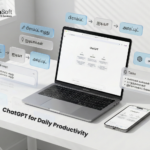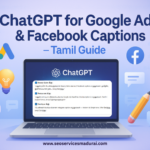Are you tired of sending out generic email campaigns that yield lacklustre results? It’s time to step up your game and unlock the power of personalization. With the right email marketing services, you can create targeted campaigns that speak directly to your audience’s interests and needs. Imagine the impact of sending an email that addresses each individual by name and offers personalized recommendations based on their previous purchases or browsing history. This level of personalization is not only possible but also crucial in today’s highly competitive digital landscape. By segmenting your email list and tailoring your messages accordingly, you can boost open rates, click-through rates, and ultimately, conversions. In this article, we will delve into why email marketing services are essential for running successful targeted campaigns. We’ll explore the benefits of personalization, discuss key features to look for in an email marketing platform and provide tips for creating effective, customized email content. Get ready to take your email marketing strategy to the next level and see the difference personalization can make.
The Power of Personalization in Email Marketing
Personalization is more than just a buzzword in the world of marketing. It has become a necessity for businesses looking to connect with their audience on a deeper level. By tailoring your email campaigns to the specific needs and preferences of your subscribers, you can create a more engaging and personalized experience.
Studies have shown that personalized emails have a higher open rate and click-through rate compared to generic emails. When subscribers see their name in the subject line or receive content that is relevant to their interests, they are more likely to engage with your email and take the desired action.
Personalization also helps to build trust and strengthen relationships with your audience. When subscribers feel that you understand their needs and provide valuable content, they are more likely to view you as a trusted source of information and products.
Benefits of Using Email Marketing Services for Targeted Campaigns
While personalization can be achieved manually to some extent, using an email marketing service makes the process much more efficient and effective. Here are some key benefits of using email marketing services for targeted campaigns:
1. Automation: Email marketing platforms allow you to automate the personalization process. You can set up triggers and workflows that automatically send personalized emails based on specific actions or events, such as a subscriber making a purchase or abandoning their shopping cart. This saves you time and ensures that your subscribers receive timely and relevant content.
2. Segmentation: With email marketing services, you can segment your email list based on various criteria such as demographics, past purchase behaviour, browsing history, or engagement level. This allows you to send targeted messages to specific groups of subscribers, increasing the chances of conversion. For example, you can send a special discount offer to loyal customers or a product recommendation to those who have shown interest in a particular category.
3. Analytics and Reporting: Email marketing platforms provide detailed analytics and reporting features that allow you to track the performance of your campaigns. You can see which emails are generating the most opens, clicks, and conversions, as well as identify areas for improvement. This data helps you make data-driven decisions and optimize your campaigns for better results.
Email Marketing Statistics
Before diving deeper into the benefits and features of email marketing services, let’s take a look at some compelling statistics that highlight the effectiveness of personalized email campaigns:
1. Personalized subject lines can increase open rates by 50%.
2. Emails with personalized content generate 6x higher transaction rates.
3. Segmented email campaigns result in 760% higher revenue compared to non-segmented campaigns.
4. 80% of marketers reported an increase in email engagement after implementing personalization strategies.
5. 72% of consumers say they only engage with personalized messaging.
These statistics clearly indicate that personalization is a powerful tool for driving engagement, conversions, and revenue through email marketing.
Choosing the Right Email Marketing Service Provider
When it comes to choosing an email marketing service provider, there are several factors to consider. Here are some key features to look for:
1. Ease of use: The platform should be user-friendly, with a simple interface that allows you to easily create and manage your email campaigns.
2. Automation capabilities: Look for a service that offers automation features such as triggered emails, drip campaigns, and workflow automation. This will save you time and enable you to deliver personalized content at scale.
3. Segmentation and targeting: Ensure that the platform provides robust segmentation and targeting options. You should be able to segment your subscribers based on various criteria and send highly targeted messages to different segments.
4. Integration: Check if the email marketing service integrates seamlessly with your existing CRM or e-commerce platform. This will allow you to sync data and create a unified customer experience across different channels.
5. Analytics and reporting: Look for a service that provides detailed analytics and reporting features. You should be able to track key metrics such as open rates, click-through rates, and conversions, as well as gain insights into subscriber behaviour.
Setting Up Your Email Marketing Campaign
Once you have chosen the right email marketing service provider, it’s time to set up your email marketing campaign. Here are some steps to follow:
1. Define your goals: Clearly define the goals of your email marketing campaign. Do you want to increase sales, promote a new product, or nurture leads? Knowing your goals will help you create targeted and relevant content.
2. Build your email list: Focus on growing your email list with quality subscribers who are genuinely interested in your products or services. Offer incentives such as exclusive content, discounts, or freebies to encourage sign-ups.
3. Segment your list: Segment your email list based on relevant criteria such as demographics, behaviour, or preferences. This will allow you to send personalized content to different segments.
4. Craft compelling subject lines: The subject line is the first thing your subscribers see, so make it compelling and personalized. Use their name or reference their recent activity to grab their attention.
5. Create engaging content: Tailor your email content to the interests and needs of your audience. Provide valuable information, offer personalized recommendations, or share exclusive offers to keep your subscribers engaged.
Creating Personalized Email Content
When it comes to creating personalized email content, there are several strategies you can use to make your emails more relevant and engaging:
1. Use dynamic content: Dynamic content allows you to display different content blocks based on the recipient’s preferences or behaviour. For example, you can show different product recommendations based on their browsing history or location.
2. Include personalized recommendations: Use data from past purchases or browsing history to provide personalized product recommendations. This shows that you understand your subscribers’ preferences and can help them discover new products they might be interested in.
3. Leverage user-generated content: Incorporate user-generated content such as reviews, testimonials, or social media posts in your emails. This adds social proof and makes your emails feel more authentic and personalized.
4. Send personalized offers and discounts: Personalize your offers and discounts based on the subscriber’s behavior or preferences. For example, you can offer a discount on a product they have shown interest in or provide a special birthday offer.
Segmentation and Targeting in Email Marketing
Segmentation and targeting are crucial for running successful email marketing campaigns. Here are some key segmentation strategies to consider:
1. Demographic segmentation: Segment your subscribers based on demographic factors such as age, gender, location, or income level. This allows you to create targeted messages that resonate with specific groups.
2. Behavioral segmentation: Segment your subscribers based on their behaviour, such as past purchases, browsing history, or engagement level. This helps you deliver personalized content and offers based on their specific actions.
3. Lifecycle stage segmentation: Segment your subscribers based on their stages in the customer lifecycle, such as new leads, active customers, or inactive subscribers. This allows you to send relevant content and offers that align with their current needs.
4. Personal interest segmentation: Segment your subscribers based on their personal interests or preferences. This can be done through surveys, preference centres, or tracking their interactions with your website or content.
Tracking and Analyzing the Success of Your Email Marketing Campaigns
Tracking and analyzing the success of your email marketing campaigns is essential for continuous improvement. Here are some key metrics to track:
1. Open rate: The percentage of recipients who opened your email. A high open rate indicates that your subject line and sender name are compelling.
2. Click-through rate (CTR): The percentage of recipients who clicked on a link in your email. A high CTR indicates that your content and call-to-action are engaging.
3. Conversion rate: The percentage of recipients who took the desired action, such as making a purchase or filling out a form. A high conversion rate indicates that your email content and offer are persuasive.
4. Bounce rate: The percentage of emails that were not delivered successfully. A high bounce rate may indicate issues with your email list quality or deliverability.
5. Unsubscribe rate: The percentage of recipients who unsubscribed from your email list. A high unsubscribe rate may indicate that your content is not relevant or engaging enough.
By tracking these metrics and analyzing the data, you can identify areas for improvement and make data-driven decisions to optimize your email marketing campaigns.
Best Practices for Effective Email Marketing
To maximize the effectiveness of your email marketing campaigns, here are some best practices to keep in mind:
1. Personalize beyond the first name: While using the subscriber’s name in the email is a great way to personalize, don’t stop there. Use data such as past purchases, browsing history, or preferences to provide more relevant and personalized content.
2. Keep your emails mobile-friendly: With the majority of emails being opened on mobile devices, it’s crucial to ensure that your emails are optimized for mobile viewing. Use responsive design and test your emails on different devices and email clients.
3. Test and optimize: Continuously test and optimize your email campaigns. Test different subject lines, content formats, calls-to-action, and sending times to see what resonates best with your audience.
4. Maintain a clean email list: Regularly clean your email list by removing inactive subscribers or those who have unsubscribed. This improves deliverability and ensures that your messages reach engaged subscribers.
5. Comply with email marketing regulations: Familiarize yourself with email marketing regulations such as the CAN-SPAM Act or GDPR (if applicable). Ensure that you have the necessary consent from your subscribers and provide clear opt-out options.
Conclusion
Email marketing services play a crucial role in unlocking the power of personalization and running successful targeted campaigns. By leveraging the benefits of personalization, segmenting your email list, and creating engaging and customized content, you can boost your open rates, click-through rates, and conversions.
Remember to choose an email marketing service provider that offers automation capabilities, robust segmentation options, and detailed analytics. Set clear goals for your campaigns, build a quality email list, and continuously track and analyze your results to optimize your email marketing strategy.
Embrace the power of personalization in your email marketing campaigns and witness the difference it can make in engaging your audience, building trust, and driving conversions. Start unleashing the power of personalization today and take your email marketing strategy to the next level.











